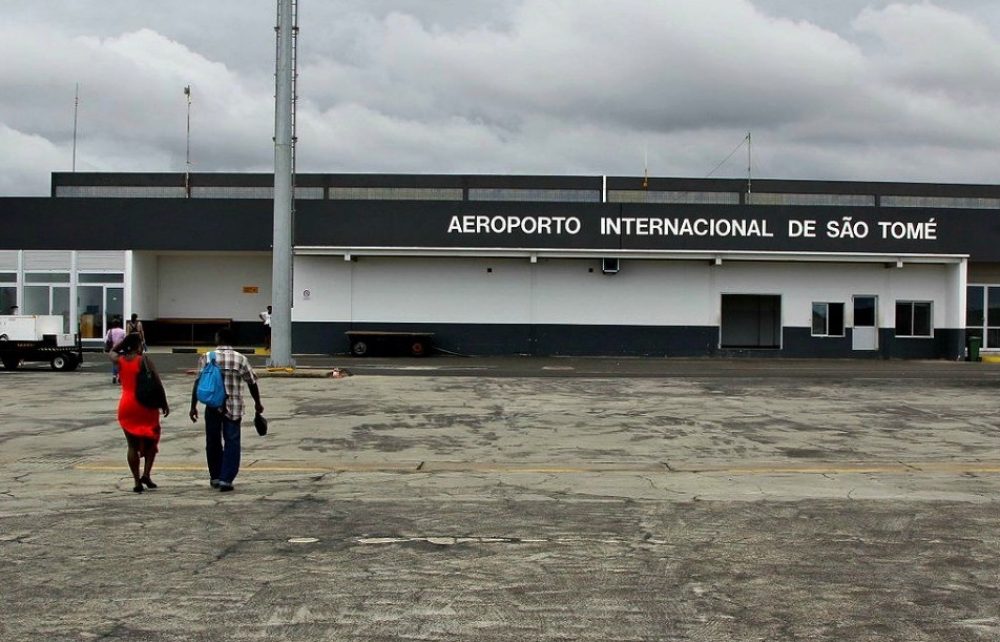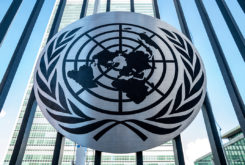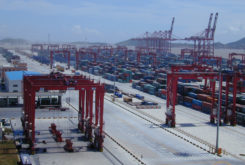Technical studies for the revamp of São Tomé International Airport, whose limitations make it one of the country’s bottlenecks, are almost complete. The most delicate part, financing, is still being worked out. Prospects are more complicated for another Chinese-built major infrastructure, the deepwater port.
Both infrastructure projects have been aspirations for governments in São Tomé and Príncipe for over a decade. The former prime minister, Patrice Trovoada, turned to China in late 2016 – ending 20 years of diplomatic relations with Taiwan – with the expectation of finally modernising the gateways to the country. But negotiations over technical and financial aspects proved more intricate, and only after the late-2018 election, which brought Jorge Bom Jesus to power, did the airport project move decisively towards launch.
According to government sources in São Tomé, technical studies for the airport modernisation project are near conclusion. Construction is expected to begin in late 2019 or early 2020 and last four years, a schedule designed to facilitate continued normal operation of the airport.
The airport runway will be extended by more than 600 metres (half of which will extend over the sea) reaching a total of 2.8 kilometres. While shorter than the initially planned 3.2 kilometres (nixed after a 2018 World Bank study), the new length will be “sufficient to receive large aircraft,” according to the PM, addressing a long-standing issue for the airport. The runway’s short extension has also caused multiple accidents and diversions of aircraft to other regional airports in the past.
Security issues will also be addressed, with the acquisition of more advanced air control systems, as well as signalling. This will facilitate landings in low visibility conditions and at night, allowing the airport to operate longer hours.
The cost of the project is currently estimated at US$100 million, according to our sources.
A major concern in negotiations has been keeping in check official public debt, currently valued at close to 100 per cent of GDP. The International Monetary Fund has gone public saying debt is “out of control” and calling for restraint in state expenses.
So as not to have infrastructure projects weigh even more on public debt, the government of Jorge Bom Jesus, and particularly Minister of Planning, Finance and the Blue Economy Osvaldo Vaz, has been trying to increase the donation component of financial support to be made available by China.
The final financial arrangement should also include a longer grace period, as well as a longer repayment deadline. Interest rates are set to be concessional. Financing entities should include the state, as well as private Chinese banks, supported by official credit lines.
The new infrastructure is expected to provide a boost to the tourism industry, by attracting more airlines to fly to São Tomé, both as a final destination and a regional hub. Currently, the country has international flights to Portugal (TAP and EuroAtlantic), Angola (TAAG), and other regional destinations.
Another infrastructure that government in São Tomé have longed for is that of the new deepwater port. But, according to our sources, technical studies are still not completed. In fact, local authorities are in dissonance with the Chinese counterparts.
While China wants to build a smaller docking infrastructure, able to support cargo and fishing vessels, the government insists on a port, even if not the deepwater infrastructure initially envisaged. In light of the differences, the government is considering a two-phase approach. Phase one would be a docking port, and in phase two, perhaps bringing in new international partners, a harbour.
According to our sources, there are ongoing negotiations not only with China, but also with two potential partners for the second phase.
For the first time, São Tomé hosted the annual Meeting of Entrepreneurs for Economic Cooperation between China and the Portuguese-speaking Countries this July. The country joined Forum Macao in 2017.
The new government is keen on bringing in more Chinese investment and intends to revive the plan to launch an offshore free trade area. Legislation is in place, but more regulation is needed. Work should begin soon with two international consulting firms to take the project off the ground. It is widely believed that, with improvements in state administration, São Tomé has the right features to become an offshore for companies aiming to invest in Africa.
Gaming is one of the areas which the government believes could be attracted by such a free trade area. The offshore would bring in more tax income for the state, helping it out its near-permanent financial constraints.
Prime Minister Jorge Bom Jesus is set to participate in next year’s Ministerial Conference of Forum Macao, a triennial event originally scheduled for 2019 which has since been postponed to 2020.
In the years since relations with São Tomé were re-established, and while technical and financial studies for the two major infrastructure projects are ongoing, China has invested around US$30 million per year in the country. Part of that money, US$5 million in 2019, goes directly to supplementing the state budget; 97.2 per cent of São Tomé’s US$150-million budget is covered by bilateral partners and multilateral organisations in the form of grants and loans.
Another Chinese-funded project on the horizon aims to build 200 social housing units over the next four years, starting in the Lobata and Cantagalo districts. The first of five apartment blocks, totalling 60 units, will begin construction this year.
With cooperation teams on the ground – for agriculture, energy, health and anti-malaria – smaller Chinese-funded infrastructure projects have also gone ahead. These have included the rehabilitation of three roads, as well as drying up a swamp close to São Tomé.
Bearing in mind the country’s difficult financial situation, along with the growing criticism by China’s rivals – mainly the US – regarding the ‘debt pile’ Chinese infrastructure projects have generated in some African economies, all projects have so far been funded by donations from Beijing.




